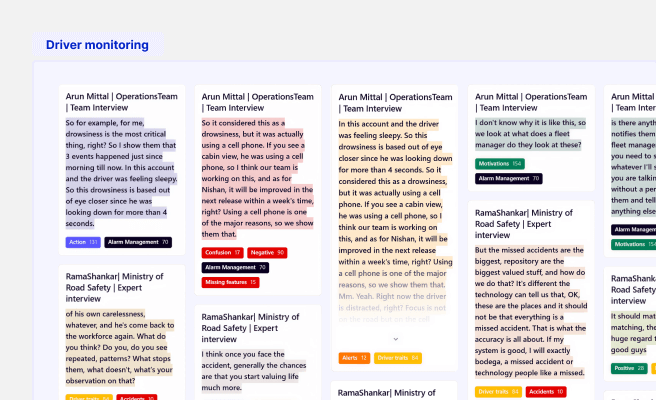Scenario Planning
<p>Scenario planning is a strategic planning method used by organizations to create flexible long-term plans. It involves developing different plausible scenarios based on various assumptions about future events and conditions, helping businesses prepare for potential risks and opportunities. This approach, rooted in strategic foresight, enables companies to navigate uncertainty and make informed decisions.</p>
<p>Historically, scenario planning gained prominence in the 1970s when Royal Dutch Shell used it to anticipate the oil crisis, significantly outperforming competitors. The technique has since evolved, becoming a staple in strategic management, especially for industries facing rapid changes and uncertainties.</p>
<h2>Importance of Scenario Planning</h2>
<p>Scenario planning is critical for organizations as it helps them:</p>
<ul>
<li>Identify potential risks and opportunities.</li>
<li>Develop strategies to navigate uncertain futures.</li>
<li>Enhance decision-making by considering multiple future possibilities.</li>
<li>Promote long-term thinking and flexibility.</li>
</ul>
<p>For example, in the climate tech industry, companies face uncertainties related to regulatory changes, technological advancements, and environmental impacts. Scenario planning allows these companies to prepare for various future states, ensuring resilience and adaptability.</p>
<h3>Components of Scenario Planning</h3>
<p>Effective scenario planning involves several key components:</p>
<ol>
<li><strong>Identifying driving forces:</strong> Recognize the key external factors that could impact the organization's future, such as economic trends, technological developments, and regulatory changes.</li>
<li><strong>Determining critical uncertainties:</strong> Identify the uncertainties that will most significantly affect the organization's future.</li>
<li><strong>Developing plausible scenarios:</strong> Create detailed narratives describing different future states based on varying assumptions about the driving forces and uncertainties.</li>
<li><strong>Analyzing implications:</strong> Assess the potential impacts of each scenario on the organization and identify strategies to address these impacts.</li>
<li><strong>Monitoring and updating:</strong> Continuously track relevant trends and adjust scenarios and strategies as needed.</li>
</ol>
<h3>Benefits of Scenario Planning</h3>
<p>Scenario planning offers numerous benefits for organizations, including:</p>
<ul>
<li><strong>Improved strategic thinking:</strong> Encourages long-term thinking and helps organizations develop more robust strategies.</li>
<li><strong>Enhanced flexibility:</strong> Prepares organizations to adapt to changing conditions and unexpected events.</li>
<li><strong>Better risk management:</strong> Identifies potential risks and opportunities, enabling organizations to develop proactive strategies.</li>
<li><strong>Informed decision-making:</strong> Provides a structured framework for considering multiple future possibilities, leading to more informed decisions.</li>
</ul>
<p>For instance, a climate tech company developing carbon capture technology might use scenario planning to evaluate the impact of different regulatory environments, technological advancements, and market conditions on its business. This approach would help the company develop strategies to thrive in various potential futures.</p>
<h3>Challenges in Scenario Planning</h3>
<p>Despite its benefits, scenario planning can be challenging. Some common challenges include:</p>
<ul>
<li><strong>Complexity:</strong> Developing and analyzing multiple scenarios can be time-consuming and resource-intensive.</li>
<li><strong>Uncertainty:</strong> Accurately predicting future events and conditions is inherently difficult, making it challenging to create realistic scenarios.</li>
<li><strong>Bias:</strong> Personal biases and assumptions can influence scenario development, leading to unrealistic or skewed scenarios.</li>
</ul>
<p>To overcome these challenges, organizations can use tools and techniques such as Delphi method, cross-impact analysis, and simulation models. Additionally, involving diverse perspectives and continuously updating scenarios based on new information can help ensure more accurate and relevant scenarios.</p>
<h3>Implementing Scenario Planning</h3>
<p>Implementing scenario planning involves several steps:</p>
<ul>
<li><strong>Define objectives:</strong> Clearly articulate the goals of the scenario planning exercise and the key questions it aims to address.</li>
<li><strong>Engage stakeholders:</strong> Involve key stakeholders from various functions and levels of the organization to gather diverse perspectives and insights.</li>
<li><strong>Develop scenarios:</strong> Follow the components and steps outlined earlier to create detailed, plausible scenarios.</li>
<li><strong>Analyze and strategize:</strong> Assess the implications of each scenario and develop strategies to address potential risks and opportunities.</li>
<li><strong>Monitor and update:</strong> Continuously track relevant trends and adjust scenarios and strategies as needed.</li>
</ul>
<p>In conclusion, scenario planning is a powerful strategic tool that helps organizations navigate uncertainty and make informed decisions. By developing and analyzing multiple plausible futures, businesses can enhance their strategic thinking, flexibility, and risk management, ultimately ensuring long-term success.</p>
<p>Learn more about improving your scenario planning strategies from trusted sources such as <a href="https://hbr.org" style="color: #2896FF; text-decoration: underline;">Harvard Business Review</a> and <a href="https://www2.deloitte.com" style="color: #2896FF; text-decoration: underline;">Deloitte</a>.</p> <p>Increase user engagement that converts your demos into sales. Optimise your UX strategies with our audits.
<p>Fill out the <a href="https://tally.so/r/n97pxQ" style="color:#2896FF; text-decoration:underline;">UX Audit form</a> to get started. Ready to discuss your needs? <a href="https://cal.com/akhilak/what-if-design?duration=25" style="color:#2896FF; text-decoration:underline;">Book a consultation call</a> with us today.</p></p>

Let's scale your impact with great design.
Free consultation, no sales pitch
Thank you! Your submission has been received!
Oops! Something went wrong while submitting the form.
Let’s talk
Nothing great is built alone.
Let’s connect about your vision, our work and how we can collaborate.
Get in touch

